BIOLOGY
Paper 4 (P4): Classification Of Living Organisms Topic Quiz 1
Question 1:
The diagram shows a fruit fly with normal wings and a fruit fly with vestigial wings.
Diagram:
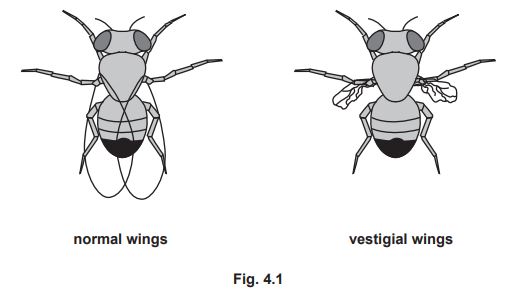
The binomial name for a fruit fly is Drosophila melanogaster.
State the genus of this fruit fly.
[1]
[Total: 1]
The diagram shows a fruit fly with normal wings and a fruit fly with vestigial wings.
Diagram:

The binomial name for a fruit fly is Drosophila melanogaster.
State the genus of this fruit fly.
[1]
[Total: 1]
Question 2:
The classification of giant pandas, Ailuropoda melanoleuca, is debated by many scientists.
Photograph A shows a giant panda eating bamboo plants.
Photograph A:
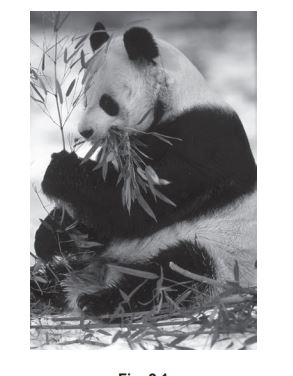
Photograph B shows a red panda, Ailurus fulgens, eating bamboo.
Photograph B:

Photograph C shows a polar bear, Ursus maritimus, eating fish.
Photograph C:
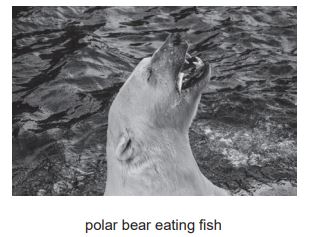
DNA can also be used to classify species.
Molecular biologists compared the DNA base sequences of eight species from the same vertebrate group. They used the differences to draw a classification diagram.
Classification Diagram:
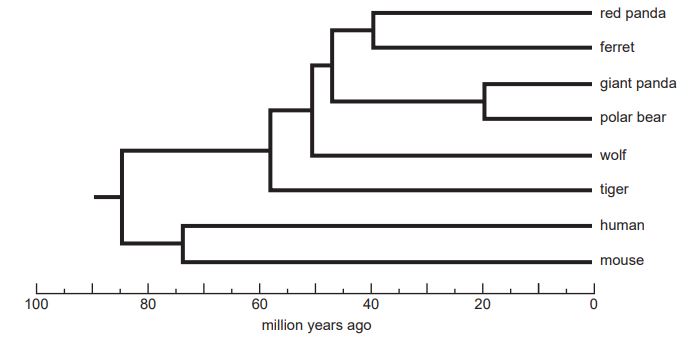
The shorter the horizontal distance from two species to the branching point that they share, the more similar their DNA sequences are and the more closely the two species are related.
The scale on the diagram shows the time at which the molecular biologists estimate that each branching point occurred.
Morphology can also be used to classify species. Some scientists think that morphology suggests that the giant panda is more closely related to the red panda than it is to the polar bear.
(a)(i) Discuss the evidence for and against the giant panda being more closely related to the red panda than it is to the polar bear. Use the information in photographs A, B and C and the diagram in your answer.
[5]
(a)(ii) State one other type of evidence that is used to classify species.
[1]
[Total: 6]
The classification of giant pandas, Ailuropoda melanoleuca, is debated by many scientists.
Photograph A shows a giant panda eating bamboo plants.
Photograph A:

Photograph B shows a red panda, Ailurus fulgens, eating bamboo.
Photograph B:

Photograph C shows a polar bear, Ursus maritimus, eating fish.
Photograph C:

DNA can also be used to classify species.
Molecular biologists compared the DNA base sequences of eight species from the same vertebrate group. They used the differences to draw a classification diagram.
Classification Diagram:

The shorter the horizontal distance from two species to the branching point that they share, the more similar their DNA sequences are and the more closely the two species are related.
The scale on the diagram shows the time at which the molecular biologists estimate that each branching point occurred.
Morphology can also be used to classify species. Some scientists think that morphology suggests that the giant panda is more closely related to the red panda than it is to the polar bear.
(a)(i) Discuss the evidence for and against the giant panda being more closely related to the red panda than it is to the polar bear. Use the information in photographs A, B and C and the diagram in your answer.
[5]
(a)(ii) State one other type of evidence that is used to classify species.
[1]
[Total: 6]
Question 3:
The Mulanje cedar, Widdringtonia whytei, is the national tree of Malawi. This species of tree grows naturally only on Mount Mulanje in Malawi. Many of the trees have been overharvested or destroyed by wildfires, resulting in deforestation, as shown in the photograph.
Photograph:

State the genus name of the Mulanje cedar tree.
[1]
[Total: 1]
The Mulanje cedar, Widdringtonia whytei, is the national tree of Malawi. This species of tree grows naturally only on Mount Mulanje in Malawi. Many of the trees have been overharvested or destroyed by wildfires, resulting in deforestation, as shown in the photograph.
Photograph:

State the genus name of the Mulanje cedar tree.
[1]
[Total: 1]
Question 4:
The photograph is of a lobster, which is an arthropod.
The scientific name of the arthropod in the photograph is Homarus americanus.
Photograph:
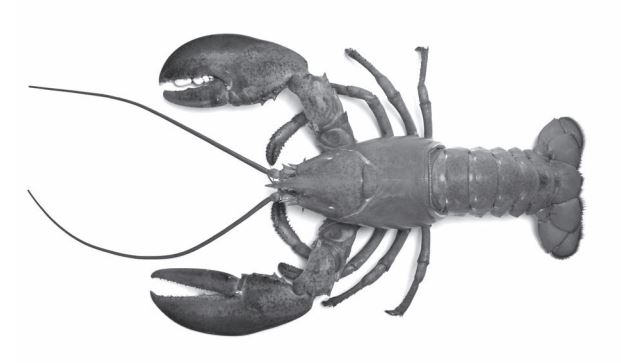
State the genus name.
[1]
[Total: 1]
The photograph is of a lobster, which is an arthropod.
The scientific name of the arthropod in the photograph is Homarus americanus.
Photograph:

State the genus name.
[1]
[Total: 1]
Question 5:
A giant rat was discovered in a natural rainforest on Vangunu Island. Scientists wanted to determine if it was a new species.
Explain how scientists can use tissue samples to classify this rat.
(2)
[Total: 2]
A giant rat was discovered in a natural rainforest on Vangunu Island. Scientists wanted to determine if it was a new species.
Explain how scientists can use tissue samples to classify this rat.
(2)
[Total: 2]
Question 6:
Johnson grass, Sorghum halepense, is wind-pollinated.
The photograph shows some Johnson grass flowers.
Photograph:
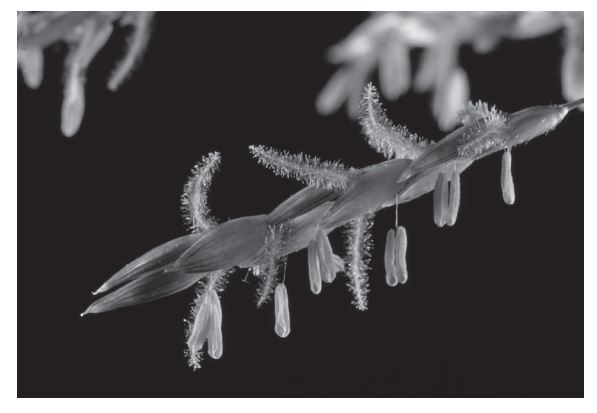
State the genus of Johnson grass.
[1]
[Total: 1]
Johnson grass, Sorghum halepense, is wind-pollinated.
The photograph shows some Johnson grass flowers.
Photograph:

State the genus of Johnson grass.
[1]
[Total: 1]
Question 7:
The king cheetah is a rare variety of A. jubatus that has inherited striped fur markings.
The photographs show a cheetah with spots and a king cheetah.
Photographs:
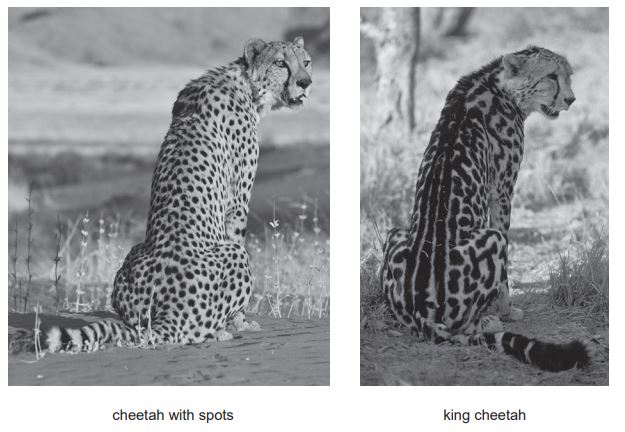
When the king cheetah was first discovered it was thought that it was a new species.
Pedigree diagrams of cheetahs proved it was not a new species.
Suggest one type of evidence, other than pedigree diagrams, that can be used to determine how closely related organisms are.
[1]
[Total: 1]
The king cheetah is a rare variety of A. jubatus that has inherited striped fur markings.
The photographs show a cheetah with spots and a king cheetah.
Photographs:

When the king cheetah was first discovered it was thought that it was a new species.
Pedigree diagrams of cheetahs proved it was not a new species.
Suggest one type of evidence, other than pedigree diagrams, that can be used to determine how closely related organisms are.
[1]
[Total: 1]
Question 8:
The Galapagos Islands are a group of small islands in the Pacific Ocean.
In 1839 Charles Darwin published a book that described differences in a family of birds called finches.
Each species of Galapagos finch had:
+ a different diet
+ a different beak shape, as shown in the diagram.
Diagram:
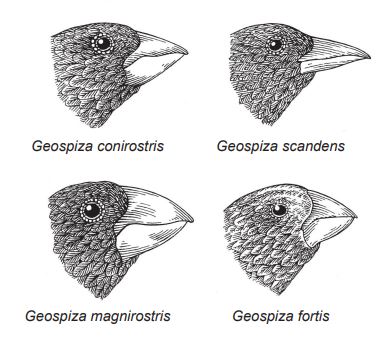
Geospiza conirostris
Geospiza scandens
Geospiza magnirostris
Geospiza fortis
State the genus name for the Galapagos finches shown in the diagram.
(1)
[Total: 1]
The Galapagos Islands are a group of small islands in the Pacific Ocean.
In 1839 Charles Darwin published a book that described differences in a family of birds called finches.
Each species of Galapagos finch had:
+ a different diet
+ a different beak shape, as shown in the diagram.
Diagram:

Geospiza conirostris
Geospiza scandens
Geospiza magnirostris
Geospiza fortis
State the genus name for the Galapagos finches shown in the diagram.
(1)
[Total: 1]
Question 9:
The binomial system of naming organisms tells us the species and the genus of the organism.
State the genus name for Chamaeleo calyptratus.
(1)
[Total: 1]
The binomial system of naming organisms tells us the species and the genus of the organism.
State the genus name for Chamaeleo calyptratus.
(1)
[Total: 1]
Question 11:
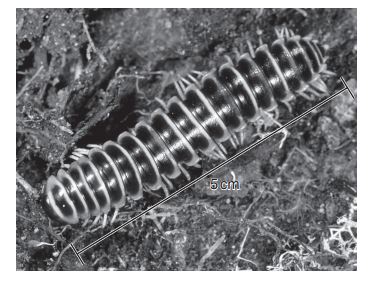
The photograph is of the myriapod, Apheloria virginiensis.
State the genus name and kingdom name for the myriapod shown in the photograph.
Genus: ..........................................................
Kingdom: ..........................................................
[2]
[Total: 2]

The photograph is of the myriapod, Apheloria virginiensis.
State the genus name and kingdom name for the myriapod shown in the photograph.
Genus: ..........................................................
Kingdom: ..........................................................
[2]
[Total: 2]
Question 12:
Spiders are classified as arachnids. Arachnids are one of the main groups of arthropods.
The diagram shows six arthropods, four of which are arachnids.
Diagram:
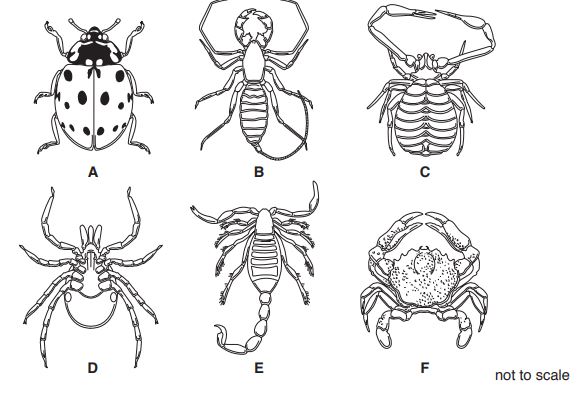
The features shown in the diagram are morphological features. Many traditional methods of classification used morphology.
State the name of one other type of feature that can also be used in classification.
(1)
[Total: 1]
Spiders are classified as arachnids. Arachnids are one of the main groups of arthropods.
The diagram shows six arthropods, four of which are arachnids.
Diagram:

The features shown in the diagram are morphological features. Many traditional methods of classification used morphology.
State the name of one other type of feature that can also be used in classification.
(1)
[Total: 1]
Question 13:
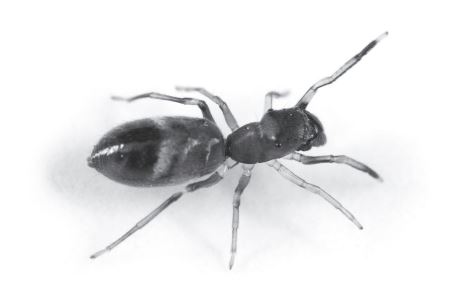
The ant-mimic jumping spider, Myrmarachne formicaria, is shown in the diagram.
The common name of this species describes its behaviour. It is an arachnid that tricks its prey because it looks like the insects that it eats.
State the genus of the spider shown in the diagram.
(1)
[Total: 1]

The ant-mimic jumping spider, Myrmarachne formicaria, is shown in the diagram.
The common name of this species describes its behaviour. It is an arachnid that tricks its prey because it looks like the insects that it eats.
State the genus of the spider shown in the diagram.
(1)
[Total: 1]
Question 14:
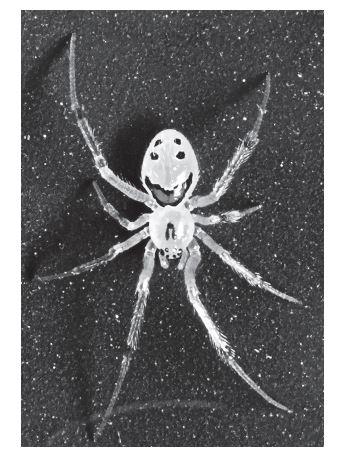
The Hawaiian happy-face spider, Theridion grallator, is found on several of the Hawaiian islands.
Some of the spiders have a very distinctive pattern on their bodies as shown in the photograph.
DNA can be extracted from the webs of spiders. This DNA can be used to identify the species of spider that made the web, and the species of prey caught in the web.
Explain how DNA extracted from spider webs can be used to identify different species.
(2)
[Total: 2]

The Hawaiian happy-face spider, Theridion grallator, is found on several of the Hawaiian islands.
Some of the spiders have a very distinctive pattern on their bodies as shown in the photograph.
DNA can be extracted from the webs of spiders. This DNA can be used to identify the species of spider that made the web, and the species of prey caught in the web.
Explain how DNA extracted from spider webs can be used to identify different species.
(2)
[Total: 2]
Question 15:
All commercial breeds of sheep belong to the species Ovis aries.
Define the term species.
(2)
[Total: 2]
All commercial breeds of sheep belong to the species Ovis aries.
Define the term species.
(2)
[Total: 2]
Question 17:
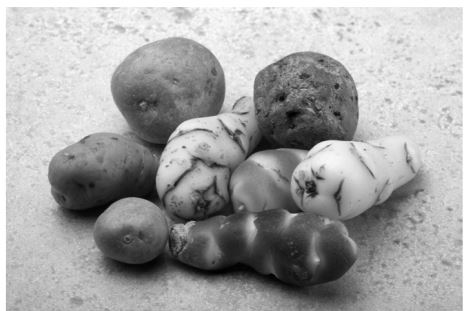
The photograph shows some of the many different varieties of potato, Solanum tuberosum, that are cultivated across the world for food.
All varieties of S. tuberosum are classified as the same species.
Define the term species.
(2)
[Total: 2]

The photograph shows some of the many different varieties of potato, Solanum tuberosum, that are cultivated across the world for food.
All varieties of S. tuberosum are classified as the same species.
Define the term species.
(2)
[Total: 2]
Question 18:
The scientific name for the African elephant is Loxodonta africana.
State the genus name of the African elephant.
(1)
[Total: 1]
The scientific name for the African elephant is Loxodonta africana.
State the genus name of the African elephant.
(1)
[Total: 1]
Question 19:
The Bengal tiger, Panthera tigris tigris, is a subspecies of tiger found in India.
State the genus name of the Bengal tiger.
(1)
[Total: 1]
The Bengal tiger, Panthera tigris tigris, is a subspecies of tiger found in India.
State the genus name of the Bengal tiger.
(1)
[Total: 1]
Question 20:
Scientists discovered a new type of frog in the Amazon rainforest.
Explain how DNA analysis can help determine if it is a new species.
(2)
[Total: 2]
Scientists discovered a new type of frog in the Amazon rainforest.
Explain how DNA analysis can help determine if it is a new species.
(2)
[Total: 2]
Question 21:
Penguins and dolphins both have streamlined bodies for swimming, yet they belong to different groups.
State one type of evidence other than morphology that scientists use to classify species.
(1)
[Total: 1]
Penguins and dolphins both have streamlined bodies for swimming, yet they belong to different groups.
State one type of evidence other than morphology that scientists use to classify species.
(1)
[Total: 1]
Question 22:
The scientific name of the gray wolf is Canis lupus.
State the genus name of the gray wolf.
(1)
[Total: 1]
The scientific name of the gray wolf is Canis lupus.
State the genus name of the gray wolf.
(1)
[Total: 1]
Question 23:
The binomial name of a sunflower is Helianthus annuus.
What is the genus of the sunflower?
(1)
[Total: 1]
The binomial name of a sunflower is Helianthus annuus.
What is the genus of the sunflower?
(1)
[Total: 1]
Question 24:
Coral reefs contain many different species of fish that appear similar.
Explain how scientists can determine if two similar-looking fish belong to the same species.
(2)
[Total: 2]
Coral reefs contain many different species of fish that appear similar.
Explain how scientists can determine if two similar-looking fish belong to the same species.
(2)
[Total: 2]
Question 25:
The domestic dog, Canis lupus familiaris, is classified as a subspecies of the gray wolf.
Define the term subspecies.
(2)
[Total: 2]
The domestic dog, Canis lupus familiaris, is classified as a subspecies of the gray wolf.
Define the term subspecies.
(2)
[Total: 2]
Solution
Solution

